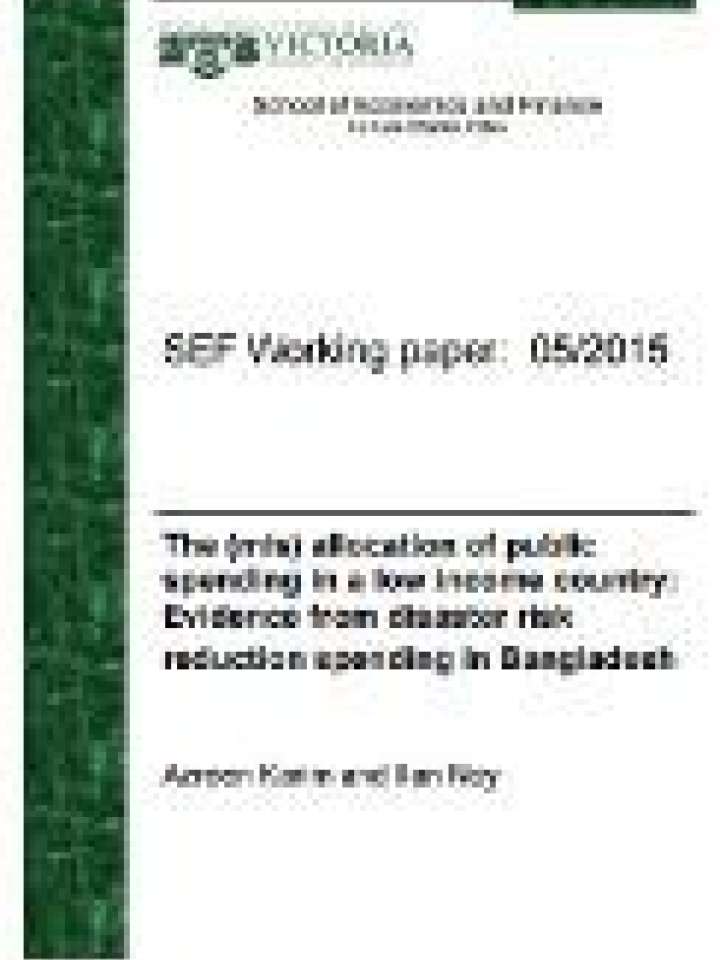The (mis) allocation of public spending in a low income country: evidence from disaster risk reduction spending in Bangladesh
School of Economics and Finance Working paper: 05/2015
This paper focuses on the regional allocation of public spending for disaster risk reduction in Bangladesh as a case study to identify the rationale that guides public funding allocations. It is well understood that any government’s public spending decision-making is also affected by considerations other than need, and the objective in this paper is to identify all of the directly observable determinants’ of publicly allocated and realized spending at the local government (sub-district) level.
The authors employ the Heckman two-stage selection model with detailed public finance and other data from 483 sub-districts (upazilas) across the country. While some of the results conform with their priors, the estimations surprisingly find that government does not respond to the sub-district’s risk exposure as a factor affecting the DRR financing mechanism. This variable is consistently counter-intuitively negative and statistically significant. The DRR regional allocations do not seem to be determined by risk and exposure, only weakly by vulnerability, nor even by more transparent political economy motivations. This is surprising, as the Bangladesh DRR program is considered a poster-child of DRR investments.
Explore further
